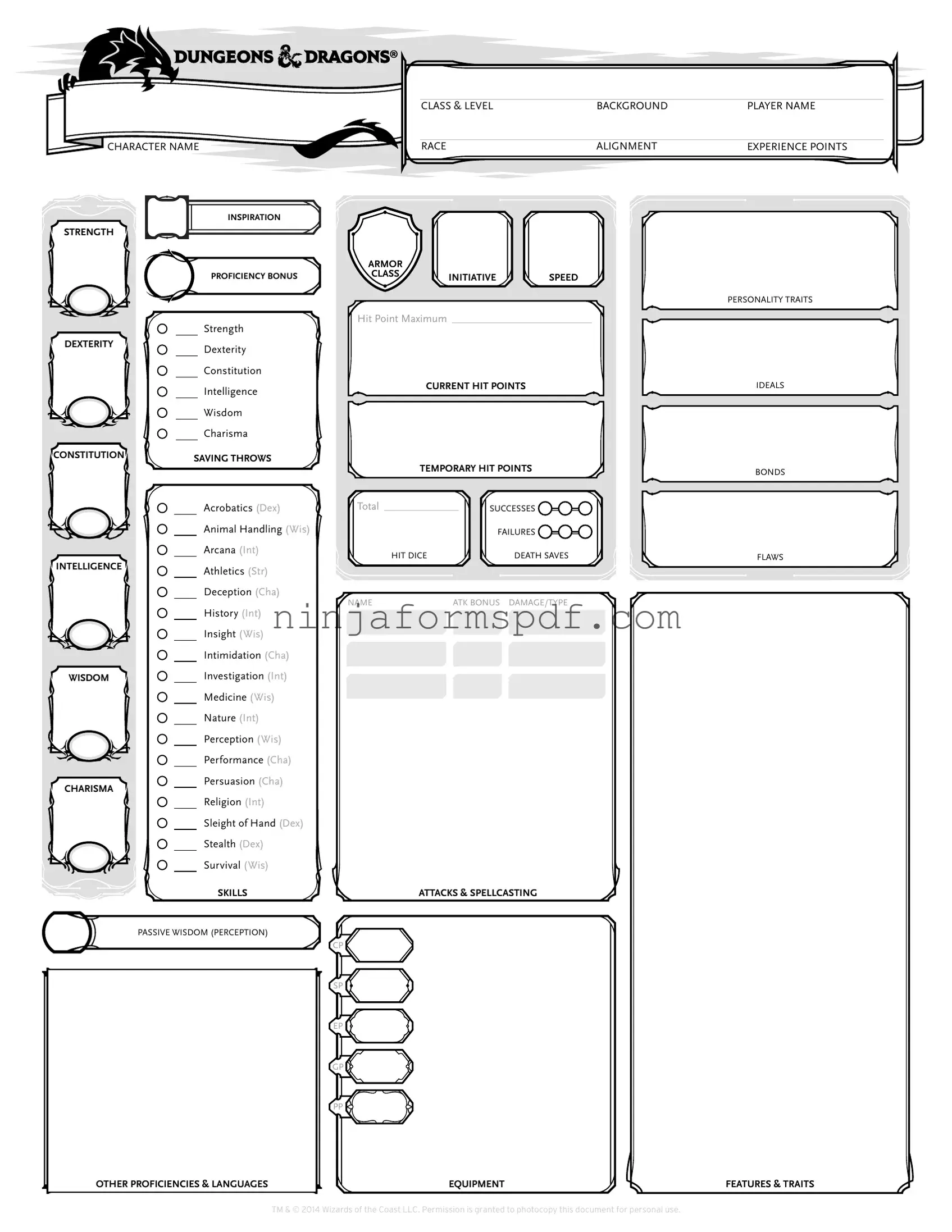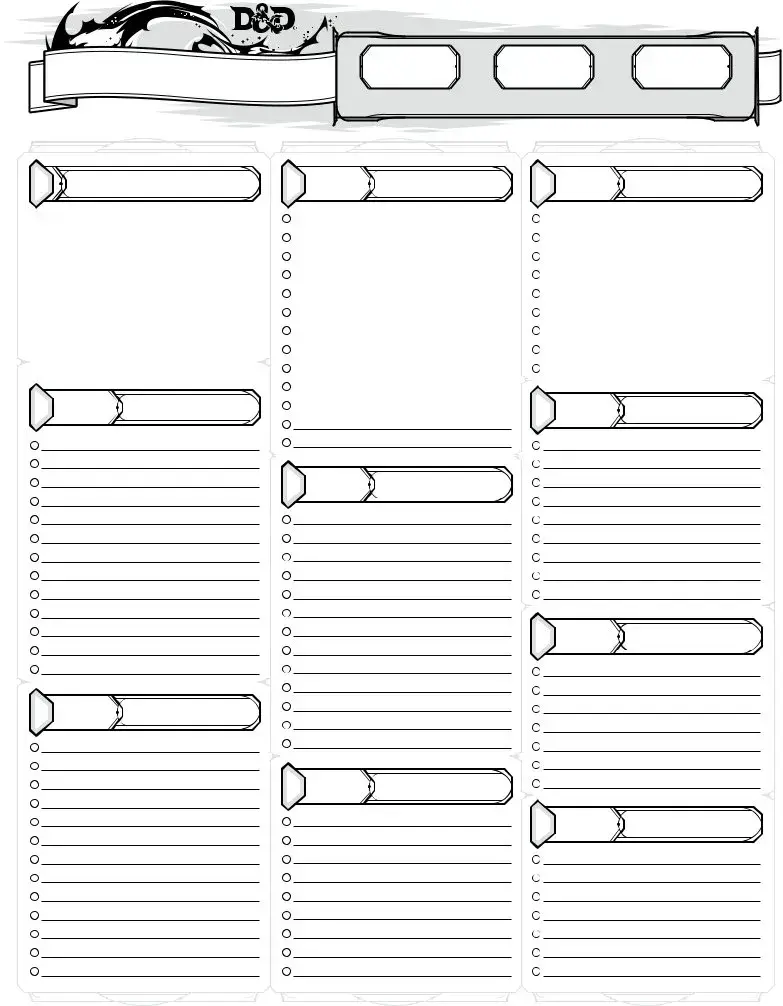What is a D&D Character Sheet?
A Dungeons and Dragons (D&D) Character Sheet is a document used by players during a game of D&D. It contains all the necessary information about their character, including statistics, skills, abilities, inventory, and backstory. Players use their character sheets to track their character's progress, health, and changes throughout their adventures in the game.
How do I fill out a D&D Character Sheet?
Filling out a D&D Character Sheet involves several steps. First, choose a race and class for your character, as these will influence your character's abilities and how they interact with the game world. Next, allocate your character’s ability scores—Strength, Dexterity, Constitution, Intelligence, Wisdom, and Charisma. These scores affect everything from combat capabilities to social interactions. Then, select skills and feats based on your class and level, record your starting equipment and spells (if any), and finally, flesh out your character's personal details like their name, alignment, experience points, and background story.
Can I create my own D&D Character Sheet?
Yes, players are encouraged to create their own D&D Character Sheets to suit their gaming preferences. While many use standard sheets provided in D&D publications or online, creating your own allows you to customize your gameplay experience. You can include additional sections for notes, create a more visually appealing layout, or adjust the sheet to better fit your campaign’s needs. However, it’s important to ensure all essential information is present and clearly organized.
What should I do if I make a mistake on my Character Sheet?
Mistakes on a D&D Character Sheet are common, especially for new players. If you make a mistake, simply erase it if you’re using pencil or use correction fluid for ink. Digital sheets can be corrected with a few clicks. It’s a good idea to keep an updated, clean copy of your character sheet after each game session to reduce clutter and confusion from too many corrections.
Is there a digital version of the D&D Character Sheet?
Yes, digital versions of the D&D Character Sheet are widely available. Many players prefer digital sheets because they are easier to edit and can be shared effortlessly with the Dungeon Master and fellow players. Several websites offer digital character sheets that can be filled out online or downloaded. Additionally, there are apps specifically designed for creating and managing digital D&D Character Sheets.
How often should I update my D&D Character Sheet?
Your D&D Character Sheet should be updated regularly, ideally after every game session. This ensures that your character’s abilities,inventory, experience points, and other details accurately reflect their current state. Regular updates can help you quickly reference your character’s capabilities during gameplay and keep track of your progress and achievements throughout the campaign.
What is the most important part of the D&D Character Sheet?
Every section of the D&D Character Sheet is important as they collectively define your character's abilities, history, and progression through the game. However, many experienced players would argue that the sections detailing your character’s abilities and stats are the most crucial. These core statistics influence almost every aspect of gameplay, from combat to interaction with the game environment. Ensuring these sections are filled out accurately and kept up to date is key to a successful campaign.













